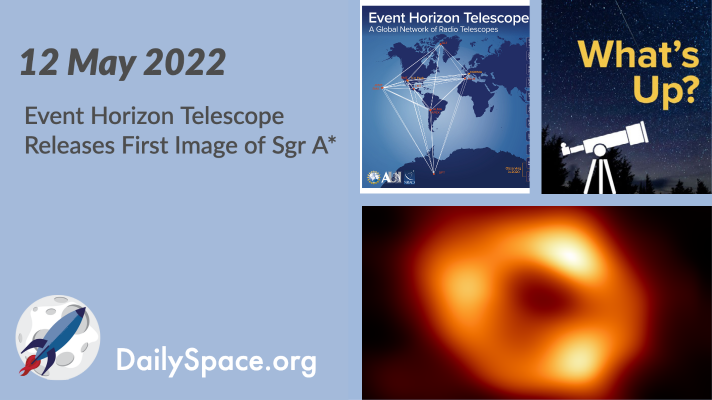
May 16, 2022 | Astrobiology, Daily Space, Earth, Exoplanets, Kepler, Mars, Moon, Review, Supermassive Black Holes, Supernovae, Zhurong
Using a mere twelve grams of lunar soil returned by the Apollo missions, scientists have successfully grown plants in the lab. With a wealth of genetic data on hand, they can now analyze the changes to the plants and the soil. Plus, stellar cannibalism, a black hole merger, brown dwarfs, water on Mars, and a review of “Star Trek: Strange New Worlds”.

May 13, 2022 | Daily Space, Milky Way, Observatories, Sky Watching, Supermassive Black Holes
In an early morning announcement, the Event Horizon Telescope collaboration finally revealed their first image of Sgr A*, the black hole at the center of the Milky Way galaxy. We have a special episode entirely about this amazing new image and the science behind it. And this week’s What’s Up is a total lunar eclipse.

May 11, 2022 | Active Galaxies, Asteroids, Citizen Science, Daily Space, Galaxies, Guest Interview, Mars, Perseverance, Rockets, Space China, Spacecraft, SpaceX, Starlink, Supermassive Black Holes
A luminous black hole already classified as an active galactic nucleus brightened suddenly in recent ground and space observations, and the cause may be due to a sudden flip in the magnetic poles. Plus, community science, rockets, Ingenuity, and an interview with Dr. Cathy Weitz from Planetary Science Institute.

May 6, 2022 | Daily Space, Neutron Stars / Pulsars, Science, Sky Watching, Supermassive Black Holes, The Sun
The flash of a pulsar about 3,000 light-years from our solar system was caused by a ‘black widow’ binary consuming a smaller star. Intriguingly, a third companion star is orbiting the pair, which may have originated near the Milky Way’s center. Plus, the Sun is ramping up, Chandra releases more sonification videos, and this week’s What’s Up is all about occultations.

Apr 29, 2022 | Daily Space, Earth, Galaxies, Mars, Perseverance, Science, Sky Watching, Supernovae
An analysis of images taken by the Spirit rover of olivine-rich rocks in Gusev crater has revealed a much more violent volcanic origin than originally thought and one that likely occurred early in Mars’s history. Plus, balloon science, more Mars, more volcanoes, pretty Hubble images, and What’s Up (a supernova!).

Apr 15, 2022 | Asteroids, Astrobiology, Comets, Crewed Space, Daily Space, Earth, Galaxies, JWST, Lucy, Mars, Mercury, Moon, Neptune, Saturn, Sky Watching, Stars, Supermassive Black Holes, Venus
An analysis of microscopic features in rocks from the Nuvvuagittuq Supracrustal Belt in Quebec, Canada, which date back between 3.75 and 4.28 billion years, finds evidence of possible microbial life. Plus, a supermassive black hole precursor, temperatures on Neptune, check-ins with various spacecraft, and our weekly What’s Up segment.








 We record most shows live, on Twitch. Follow us today to get alerts when we go live.
We record most shows live, on Twitch. Follow us today to get alerts when we go live.